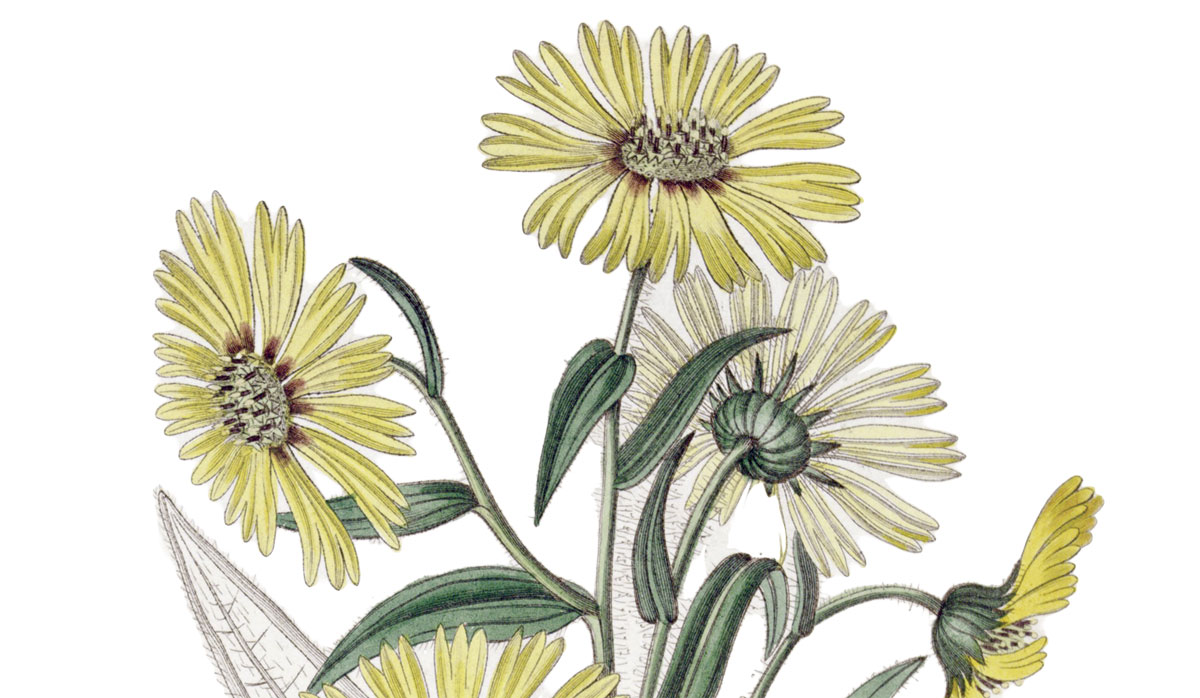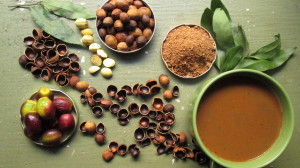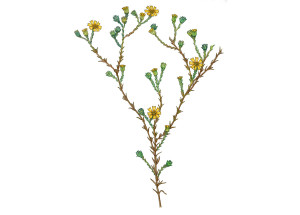Autumn in the Bay Area: syrupy light splashing on bigleaf maple leaves; cool mornings and blazing afternoons; the scent of gold-dead grass mixed with the slightest charcoal cologne of some far-off brush fire. At a time when much of the rest of the country bundles up, the Bay strips down and sweats it out, and the heat has a scent palette all its own. You’d be forgiven for grumbling about passersby wearing too much perfume when, oops, it’s just a nearby herb—pennyroyal, perhaps, or tarweed—in full and flagrant bloom.
“A sense of maturity, or at least of endured experience, is conveyed, for some reason, in the smell of autumn,” writes Anthony Powell in A Buyer’s Market, a 1950s novel of British high society and its social-climbing marriages. The novel takes place in a season that is green and damp, with what might appear to be little relation to the fiery autumns of the Bay—unless you think of San Francisco as the highest-society damsel of them all, her autumn finery as flirtation meant to beckon the winter rains closer. Still, olfaction scientist and biological psychologist Avery Gilbert noted the line recently as he read his way through Powell’s 12-novel series A Dance to the Music of Time, saying he appreciated in particular the author’s use of smell as literary shorthand.
Gilbert, who grew up in Northern California, recently published two fictional short stories about an olfaction scientist living in Berkeley; he notes that not many writers use seasonal smells to set a scene and considers that a lost opportunity. “We’re not particularly good as a species at identifying individual smells, seeking them out, parsing them one from the other,” he says. “But we’re good at having smells generate context.”
Now based in Colorado, Gilbert hails the “toasted” smell of the Central Valley as the scent that generates autumn context for him. Fall, he notes, is “the initial start of decay, for most places in the world.” The smell of baking fields hails a slide from verdant life into silence and sleep.
Bay Area autumn is an outlier that denies cliché and defies expectation. It’s too dry for what Gilbert calls the “mushroomy, composty” smell of wet leaves so common in the east. It’s too hot for the traditional scents of impending winter. It’s too filled with the riotous fragrance of flowers, the musty sweet tang of redwoods, the odd herbal tones of those damn invasive fennel heads. “Botanically,” Gilbert says, “it’s strange.”
Scent processing is part of our limbic system, which is why odor memories tend to be emotional, according to Pamela Dalton, an olfaction scientist at the Monell Chemical Senses Center in Philadelphia. That means our feelings about other things can get tangled up with sensory memories and experiences, especially in a “botanically strange” place like the Bay. Take fall, which is often a period of abrupt adjustment in habits, activities, and rituals. “Fall has more of a break in it,” Dalton says. “There’s that first morning when you wake up, and it’s just different.” Some people find that sudden hiccup into newness exhilarating; for others it’s melancholy or scary.
We sew these changing seasonal smell-scapes together with words, metonymies that evoke the season with just a few syllables: “crunch,” for example, or the ever-present “crisp.” In fact, to describe a fall morning in the Bay as smelling “crisp” is to play with platitude. In scent terms, “crisp” refers usually to a lack of fragrance; the physics of cooler air means that fewer scent molecules make it up our noses, Dalton says. And any Bay Area native knows that moments of true crispness are few and far between, even in the fall. One is more likely to encounter the pungent scent of the last wisps of fog lifting or the brisk, bright smell of pine and eucalyptus in an early chill.
That morning moisture actually heightens scent, rather than deadening it, Dalton says: “The humidified nose smells better.” Then, the heat of the later day further excites scent molecules into a frenzy, a sensory match for the fall colors so famously on visual display elsewhere. That’s part of why the smells of Bay Area fall are so potent: baked sage and fallen leaves underfoot in an oak woodland; warm earth and ripe fruit in a pumpkin patch; or the sidewalk perfume of late-blooming flowers. Fall is the time for tarweeds, whose thumbtack-shaped glands happily extrude a musky mineral smell in retort to the sweetness around them. Buckwheats spread their fragrance with abandon; California fuchsia keeps its scent to itself, sharing it only with the hummingbirds. And the ever-present perfume of the Bay laurel tree takes the hills and doesn’t give them back until December.
By then, the rains have arrived, the seasons wheeled, the weather cooled. Even in the unconventional Bay Area, the wild smell of autumn abandon prefaces transformation. Lurking underneath those scents, Gilbert says, is something “vegetal and organic, the smell of decay.” Perhaps that’s what struck Powell when he wrote about the smell of autumn in A Buyer’s Market. It’s the scent of change.
Correction: an earlier version of this story referred to red bigleaf maple leaves. Bigleaf maple leaves turn more yellowish-brown.



